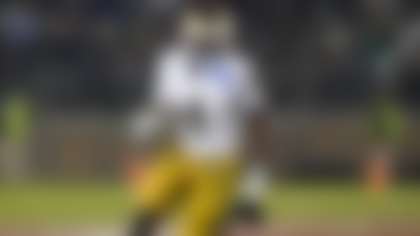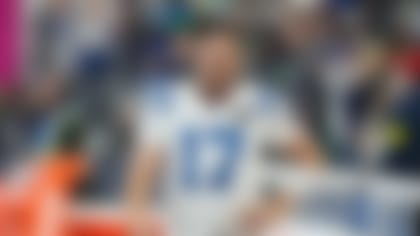WASHINGTON -- Some of the brightest minds available spent much of Wednesday discussing football and brain injuries with NFL doctors, trainers and players. Their conclusion: They still have a lot to learn.
"The fairly unanimous feeling today was that we needed new studies," said Dr. Constantine Lyketsos of Johns Hopkins Medicine.
Concussions have become a major topic of concern in the NFL over the past year. The league has implemented new return-to-play guidelines for when players sustain concussions during practice or a game, and each team must have an independent neurologist who's consulted when a player has a head injury.
Whereas the NFL might have appeared less pro-active regarding concussions in the past -- and at odds with independent research or the players' union -- the league's representatives say that tone has changed.
"I think your key is 'in the past,'" said Dr. Richard Ellenbogen, a co-chairman of the NFL's revamped head, neck and spine medical committee. "I think going forward, we are walking lock step. We have a very audacious goal in front of us."
That goal, according to Ellenbogen, is to change the culture among NFL players, who have tendency to downplay head injuries. Players want to stay on the field, keep their jobs and sign more lucrative contracts.
Trying to reverse that thought process won't be easy.
Some of the culture-changing ideas suggested Wednesday by doctors in an air-conditioned hotel would be a challenge to implement on a practical basis to a group of sweaty players on a Sunday afternoon.
Ellenbogen and co-chairman Hunt Batjer broached the idea of giving players some sort of financial incentive for reporting concussions. They also suggested finding a way to ensure players wouldn't lose their place in the lineup or the roster if they miss time with a concussion.
They also discussed the possibility of having a transmitter in the helmet of every player -- to record every major and minor blow to the head and gauge the cumulative effect. Lyketsos cited experiments with University of North Carolina players, which found that players averaged 950 hits to the head per season.
"We know that head trauma is bad for you," Batjer said. "What we don't know: 'Is it the amplitude? The severity? The frequency? The duration between impacts?'"
More practical ideas continue to be discussed and debated: cutting back on offseason practice time, reducing hitting during in-season practices, making helmets safer, educating players to stop tackling headfirst.
But Lyketsos said there are still gaps in what doctors know about football's long-term effects on the brain. He said there needs to be more than the "smattering of studies" that have so far been conducted.
"So it now becomes a matter of getting the powers-the-be together to design the studies, getting the players to participate," Lyketsos said, "and to find the funding."
Copyright 2010 by The Associated Press



